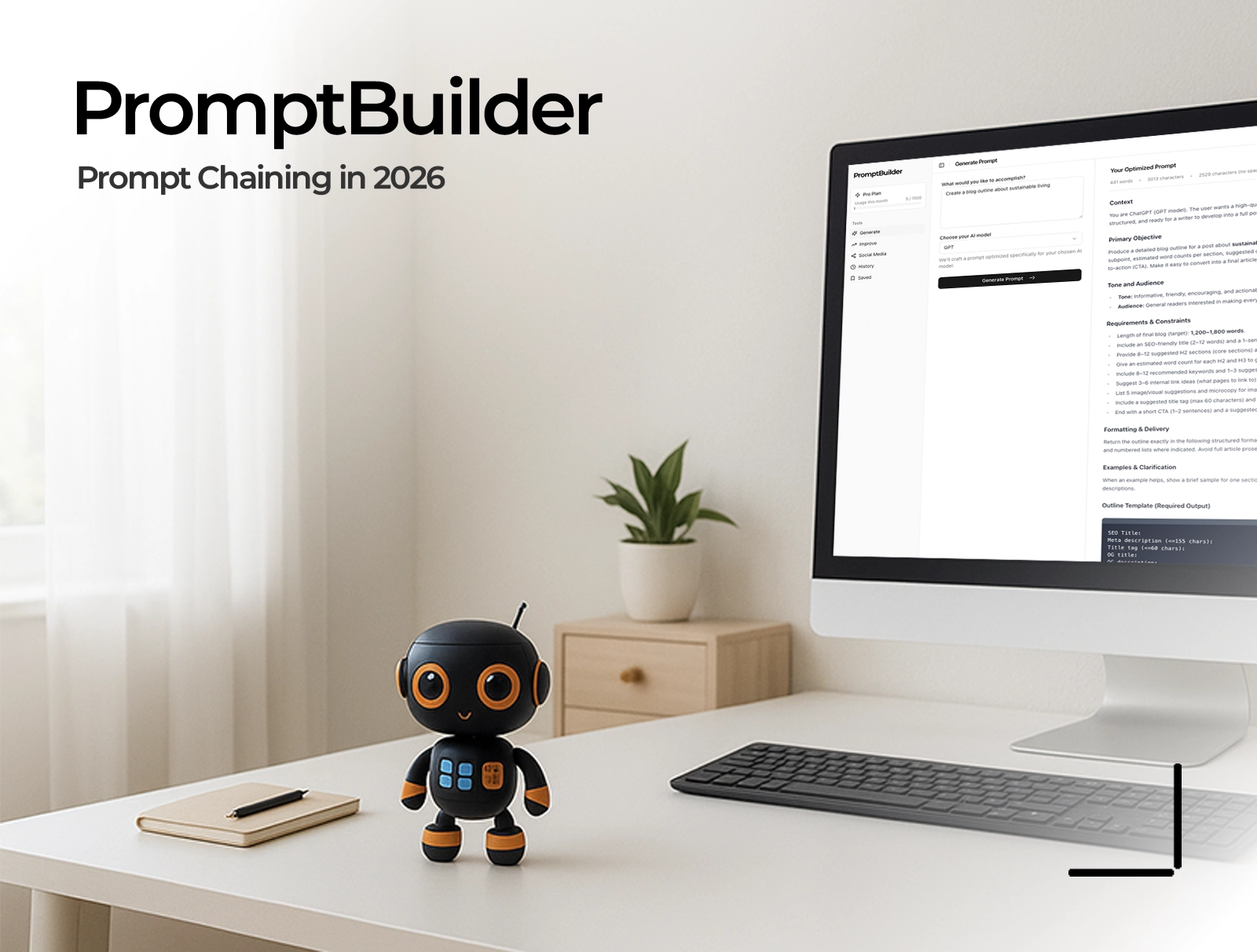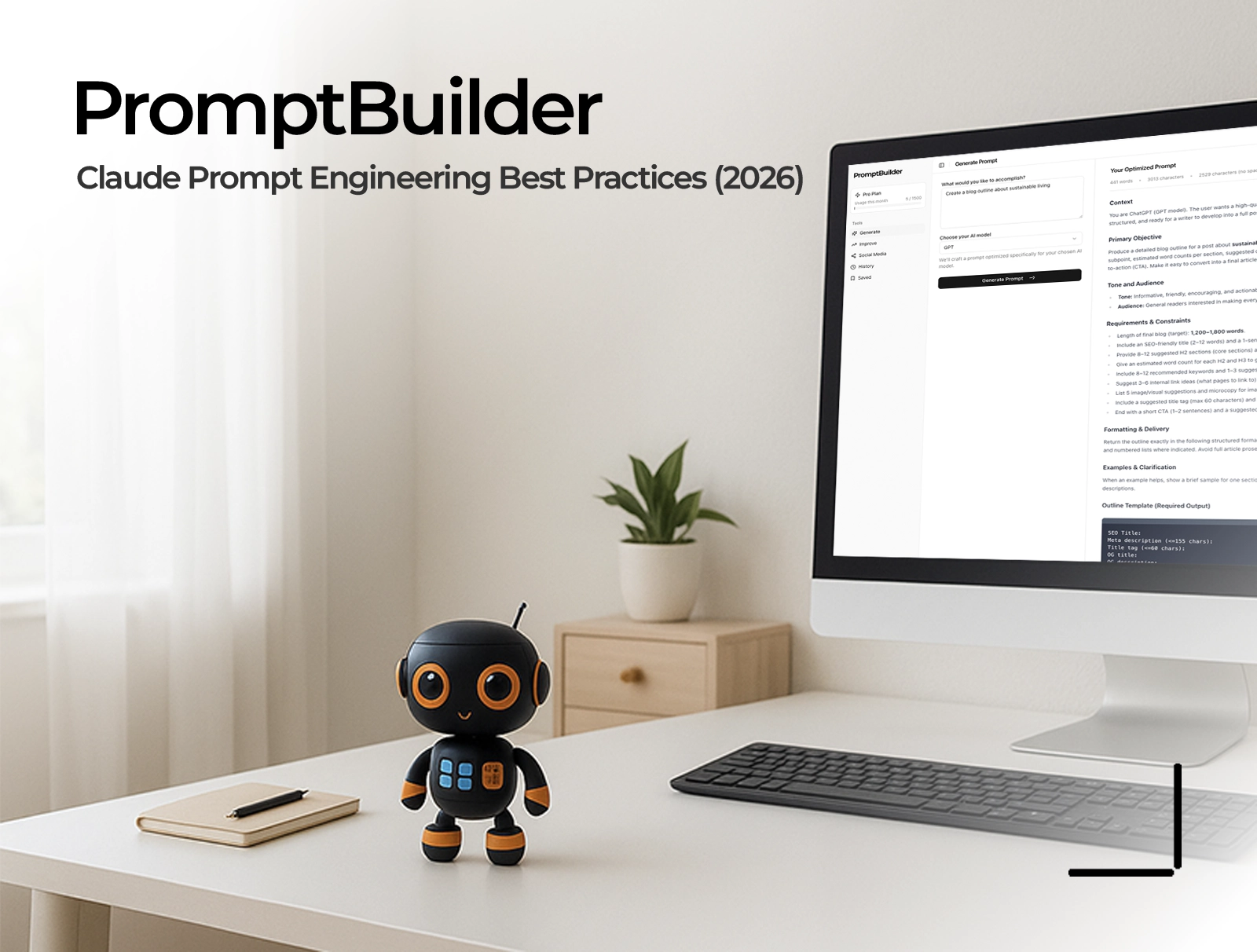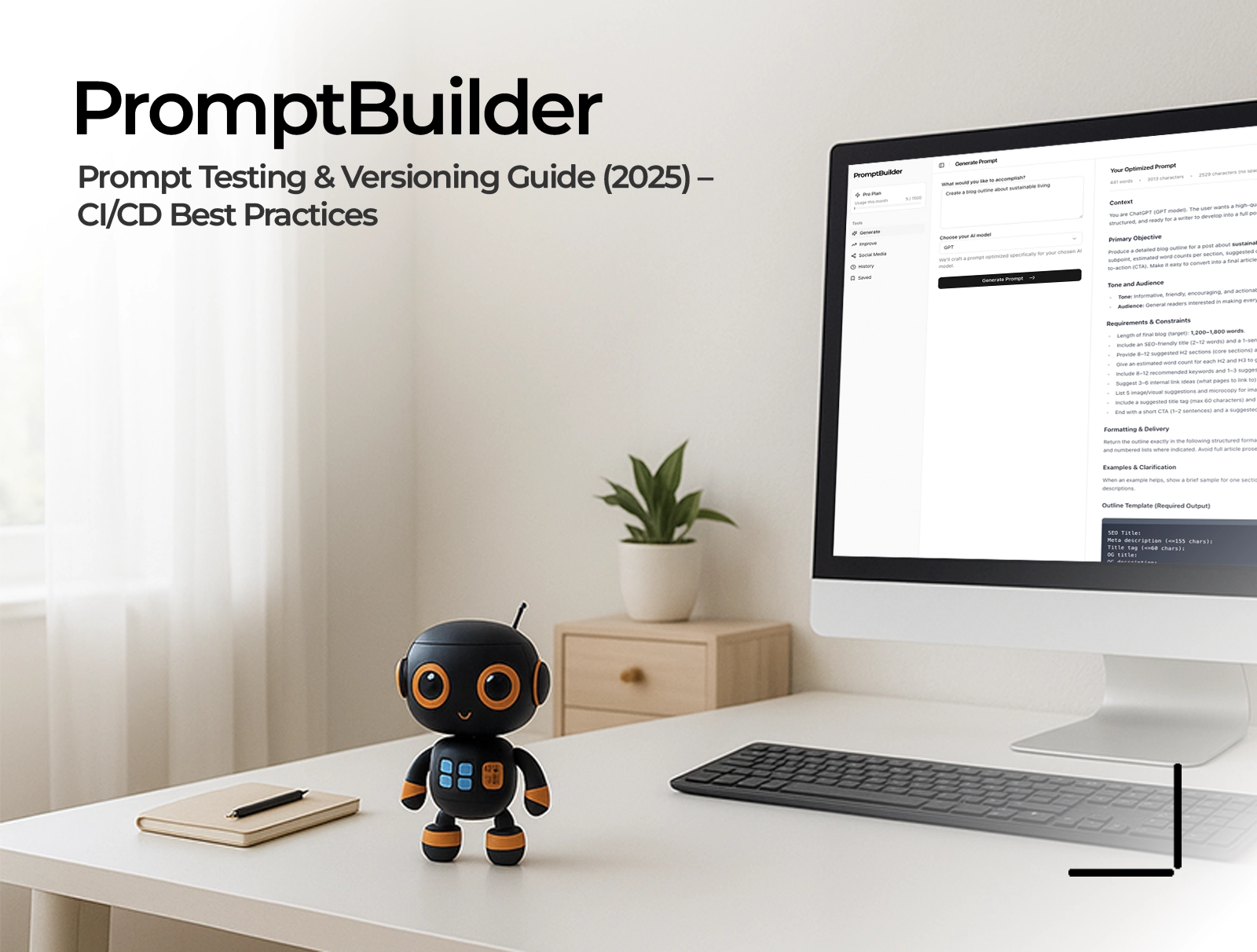Prompt Engineering Best Practices for 2025
Prompt engineering matured in 2025. Below is a concise, field‑tested set of practices that consistently improves output quality across ChatGPT, Claude, and Gemini - plus the anti‑patterns that quietly degrade results.
The GOLDEN Checklist (2025)
Use this order when crafting any important prompt.
- Goal - one clear objective and success criteria
- Output - required format, length, and tone
- Limits - constraints (scope, sources, policy, budget, tokens)
- Data - the minimum context or examples
- Evaluation - rubric to verify the result
- Next - ask for a follow‑up plan or alternatives
Copy‑paste template:
Goal: {{objective and success criteria}}
Output: {{format, length, tone}}
Limits: {{scope, rules, budget, tokens}}
Data: {{context, examples, sources}}
Evaluation: {{rubric or acceptance criteria}}
Next: Provide next steps or 2 alternatives if confidence < 0.7
Model‑Specific Guidance (ChatGPT, Claude, Gemini)
- ChatGPT (GPT‑4o): benefits from explicit role + formatting; excels at code and structured outputs.
- Claude 3: excels at long, careful reasoning; include assumptions, safety, and critique steps.
- Gemini 1.5: call out multimodal inputs and math/verification; ask for citations when relevant.
Tip: keep the same GOLDEN skeleton but tweak tone and examples per model.
Anti‑Patterns to Avoid
- Vague goals: “make this better” with no rubric
- Context dumping: long, unstructured text without prioritization
- Hidden constraints: length, tone, or data limitations are implied but not stated
- One‑shot reliance: no iteration, no evaluation, no alternatives
- Format drift: not specifying output structure for downstream use
Baseline → Improve → Verify (BIV) Loop
-
Baseline prompt (small, fast) → collect a candidate
-
Improve: add missing context, constraints, or examples; optionally use a framework like CRISPE
-
Verify: run a Chain‑of‑Verification or Self‑Consistency pass (see Advanced Techniques)
First, produce the best answer.
Then verify by checking assumptions, sources, and edge cases.
If issues are found, revise and output the corrected answer.
Copy‑Paste Best‑Practice Prompts
Executive Brief (200 words max)
Role: Strategy analyst
Goal: Executive brief on {{topic}} for {{audience}}
Output: 5 bullet insights + 3 risks + 3 next steps (<=200 words)
Limits: Avoid jargon; cite sources if used
Evaluation: Clarity(0‑5), Evidence(0‑5), Actionability(0‑5)
Technical RFC Draft
Role: Senior engineer
Goal: Draft RFC for {{feature}}
Output: Problem, Goals/Non‑Goals, Design, Risks, Migration, Open Questions
Limits: Max 900 words; no vendor lock‑in
Evaluation: Completeness, Feasibility, Risk coverage
Multimodal Analysis (Gemini)
Task: Analyze the attached image + text for {{objective}}
Output: Findings, Evidence from image, Recommendations
Limits: Be explicit about uncertainties
Measuring Quality in 2025
- Define objective metrics (win rate vs baseline, token cost, time)
- Use small eval sets and track regression
- Add a rubric to the prompt so quality is visible in the output
FAQ
What’s the single most important best practice? Clearly define Goal and Output - most failures start there.
Do these practices work across models? Yes. Adjust examples and tone; keep structure consistent.
How often should prompts be reviewed? Monthly for high‑value flows, or when models change.
See also: Best Prompt Frameworks in 2025, Advanced Prompting Techniques for 2025, and the pillar Prompt Engineering in 2025: Complete Guide.


